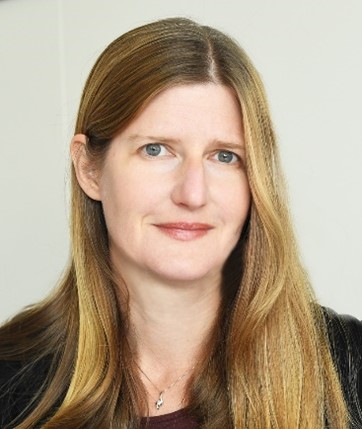47th Annual Naff Symposium
|
Innovation in Molecular Neuroscience Schedule of Events - April 1, 2022 |
|
|---|---|
| 8:00am |
Registration and Continental Breakfast |
| 8:50am |
Welcome - TBD |
| 9:00am |
Dr. Erin Calipari |
| 10:00am |
Break |
| 10:30am |
Dr. Tim Harris |
| 11:30am |
Lunch & Break |
| 1:00pm |
Dr. Elizabeth Hillman |
| 2:00pm |
Break & Poster Session Set-Up |
| 2:30pm |
Dr. Baljit Khakh |
| 3:30 - 5:00pm |
Poster Session |
|
Speakers |
|
|---|---|
|
|
Dr. Erin Calipari Vanderbilt University Dr. Calipari received her PhD in Neuroscience in 2013 in the laboratory of Dr. Sara Jones at Wake Forest University School of Medicine where she studied how self-administered drugs altered dopaminergic function to drive addictive behaviors. She then went on to complete her postdoctoral training with Dr. Eric Nestler at Icahn School of Medicine at Mount Sinai, where she used circuit probing techniques to understand the temporally specific neural signals that underlie motivation and reward learning. She is currently an Assistant Professor at Vanderbilt University in the Department of Pharmacology. Her independent work seeks to characterize and modulate the precise circuits in the brain that underlie both adaptive and maladaptive processes in reward, motivation, and associative learning. |
 |
Dr. Tim Harris Johns Hopkins University Timothy Harris is a research professor in the Department of Biomedical Engineering. He leads the Applied Physics and Instrumentation Group at the HHMI Janelia Research Campus, and is the originator of the project that produced the Neuropixels Si probe for extracellular recording in animals, mostly mice, and rats. He shares his time between Janelia and Johns Hopkins and is working on projects to enable recording 10-20,000 neurons in rodents and 30-50,000 neurons in non-human primates, as well as stimulate with high resolution. He received a BS in Chemistry at California Polytechnical State University, San Luis Obispo, and a PhD in Analytical Chemistry at Purdue University. |
 |
Dr. Elizabeth Hillman Columbia University Elizabeth Hillman is professor of biomedical engineering and radiology at Columbia University and a member of the Mortimer B. Zuckerman Mind Brain Behavior Institute and Kavli Institute for Brain Science at Columbia. Hillman received her undergraduate degree in physics and Ph.D. in medical physics and bioengineering at University College London and completed post-doctoral training at Massachusetts General Hospital/Harvard Medical School. In 2006, Hillman moved to Columbia University, founding the Laboratory for Functional Optical Imaging. Hillman’s research program focuses on the development and application of optical imaging and microscopy technologies to capture functional dynamics in the living brain. Most recently, she developed swept confocally aligned planar excitation (SCAPE) microscopy, a technique capable of very high speed volumetric imaging of neural activity in behaving organisms such as adult and larval Drosophila, zebrafish, C. elegans and the rodent brain. Hillman’s research program also includes exploring the interrelation between neural activity and blood flow in the brain, as the basis for signals detected by functional magnetic resonance imaging (fMRI). Hillman is a fellow of the Optical Society of America (OSA), the society of photo-optical instrumentation (SPIE) and the American Institute for Medical and Biological Engineering (AIMBE). She has received the OSA Adolf Lomb Medal for contributions to optics, as well as early career awards from the Wallace Coulter Foundation, National Science Foundation and Human Frontier Science Program. |
 |
Dr. Baljit Khakh University of California, Los Angeles Baljit Khakh completed his Ph.D. at the University of Cambridge in the laboratory of Patrick PA Humphrey. He completed postdoctoral fellowships in the laboratory of Graeme Henderson at the University of Bristol, and then in the laboratory of Henry A. Lester and Norman Davidson at California Institute of Technology. In 2001, Khakh became Group Leader at the MRC Laboratory of Molecular Biology in Cambridge, and in 2006 he moved to the University of California, Los Angeles where he is Professor of Physiology and Neurobiology. Khakh’s work has been recognized, including with the NIH Director's Pioneer Award, the Paul G. Allen Distinguished Investigator Award, and the Outstanding Investigator Award (R35) from NINDS. |
2022 Naff Symposium Committee
Dr. Chris Richards - Chair

 which are water solutions. However, aqueous media are very important in analytical, environmental, and biomedical applications, so it is valuable to adapt our supramolecular tools to them. With the right tools, even the weakest noncovalent interactions can be pressed into service in aqueous media. We have been using water-soluble polymers (e.g. dendrimers, hydrogels, conjugated polymers) as scaffolds to build multivalent supramolecular sensors that take advantage of the large number of interactions and of the preorganization of receptor sites afforded by such scaffolds, resulting in improved affinity in buffered aqueous solutions near neutral pH. We have successfully built systems for the detection of interesting guest families, including carboxylate anions, simple saccharides, heavy metal cations, and polycyclic aromatic hydrocarbons. These are examples of a general approach with two key advantages. On the one hand, installing known receptor chemistry on a polymer scaffold affords a modular approach to multivalency with minimal design and synthesis effort. This improves the apparent strength of weaker interactions and allows them to overcome desolvation costs in water. On the other hand, water-soluble macromolecular scaffolds impart solubility to water-incompatible receptor families.
which are water solutions. However, aqueous media are very important in analytical, environmental, and biomedical applications, so it is valuable to adapt our supramolecular tools to them. With the right tools, even the weakest noncovalent interactions can be pressed into service in aqueous media. We have been using water-soluble polymers (e.g. dendrimers, hydrogels, conjugated polymers) as scaffolds to build multivalent supramolecular sensors that take advantage of the large number of interactions and of the preorganization of receptor sites afforded by such scaffolds, resulting in improved affinity in buffered aqueous solutions near neutral pH. We have successfully built systems for the detection of interesting guest families, including carboxylate anions, simple saccharides, heavy metal cations, and polycyclic aromatic hydrocarbons. These are examples of a general approach with two key advantages. On the one hand, installing known receptor chemistry on a polymer scaffold affords a modular approach to multivalency with minimal design and synthesis effort. This improves the apparent strength of weaker interactions and allows them to overcome desolvation costs in water. On the other hand, water-soluble macromolecular scaffolds impart solubility to water-incompatible receptor families.